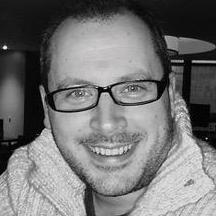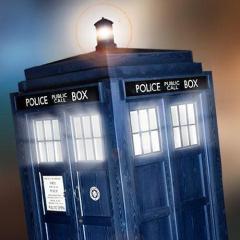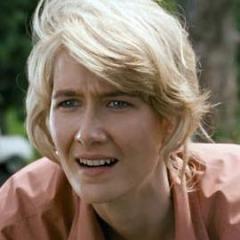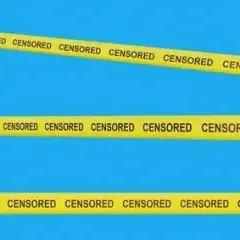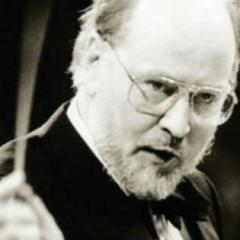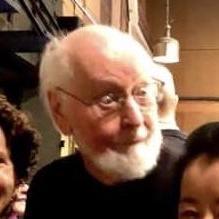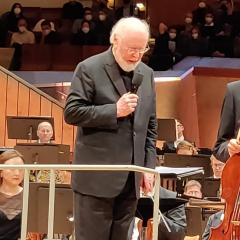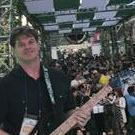-
Posts
7 -
Joined
-
Last visited
Reputation Activity
-
 DomSewell got a reaction from artus_grayboot in Spotting and synch by JW and Wannberg in The Empire Strikes Back
DomSewell got a reaction from artus_grayboot in Spotting and synch by JW and Wannberg in The Empire Strikes Back
Apologies if this has been covered but I'm interested in the technology that JW had access to in 1980 for The Empire Strikes Back. There are no tempo markings in the orchestrator scores but there are in his sketches (I say sketches but really they are handwritten full scores with all the orchestration in a condensed format). So for example, in Asteroid Field he indicates a span of time from 27sec9fr to 29s4fr with 4 beats between them. All he would have had was Kenneth Wannberg (RIP (didn't realise he died last year)) a moviola machine, a stopwatch (?) and some calculations 60/secs in clip x beats = BPM and presumably a click book. A click book still exists in older editions of Karlin and Wright On the Track and I think I worked out using it that the bpm was 133.95 for 1.79secs (1s and 19fr with 24fps).
What i want to know is who put streamers on for the sessions as well as worked out the BPM's and where did they list them? Quite a large chunk of time would have been taken up by that synchronisation stage and if JW only had Wannberg to help him the achievement of writing such a lot of complex music for that film is even more if a Herculean effort.
Part observation and interest this post... clip with Wannberg towards the end of the vid...
-
 DomSewell got a reaction from artus_grayboot in Some thoughts on John Williams's atonal moments with reference to The Empire Strikes Back
DomSewell got a reaction from artus_grayboot in Some thoughts on John Williams's atonal moments with reference to The Empire Strikes Back
Thanks so much! I’ll do my best and yes will do some Goldsmith and Horner too after The ESB.
Possibly. But I suspect (although don’t know for certain) that a lot of the theory was already ingrained at his age even then (studies with Tedesco and others). Tim Rodier (Omni Music) suggested he did a lot of woodshedding when his first wife sadly passed away in 1974 (would be interesting to compare his work after with before?)
Of course that’s not to say that he didn’t get inspired by moving his fingers across the keys. It’s undoubtedly true that he did get get inspired in this way (as did Stravinsky eg Petrushka black keys/white keys). But also using the example of Stravinsky he also must have worked out certain combinations of notes that seem to ‘work’ since they come up again and again. The detail of his score shows someone who painstakingly writes (perhaps after having a play around!) - I really hope someone asks him about his classical studies and what books he was aware of. My feeling (I think others would generally agree) is that the coincidences of using Octatonic, hexatonic and Hungarian minor (and Super Locrian) are far too numerous to ‘intuit’.
I’ll be chatting to Frank Lehman soon I’m the next couple of weeks so will ask him about this ! It’s a fascinating topic! And thanks too!
Well put!
-
 DomSewell reacted to Falstaft in NY Times Article: "How to Write Music for Rolling Boulders"
DomSewell reacted to Falstaft in NY Times Article: "How to Write Music for Rolling Boulders"
Thanks so much @Jay, that means a lot to me! I do hope this article will, in some small way, make a case for a more respectful treatment of symphonic film scoring. Judging from the comments, I think audiences are eager for a return.
The NPR segment I did was with Think! and should be streamable here: https://www.npr.org/podcasts/478859728/think. We cover some of the same ideas from the NYT article but also touch on Williams's career more generally (including Daddy-O!).
-
 DomSewell reacted to karelm in NY Times Article: "How to Write Music for Rolling Boulders"
DomSewell reacted to karelm in NY Times Article: "How to Write Music for Rolling Boulders"
It's a nicely curated traversal. I heard it on NPR and thought "what the!@?@?! But that's Falstaft!" Great job!
-
 DomSewell reacted to karelm in Spotting and synch by JW and Wannberg in The Empire Strikes Back
DomSewell reacted to karelm in Spotting and synch by JW and Wannberg in The Empire Strikes Back
Yes, he generally uses his 8 stave short scores with two systems per page. Here is a close up of his conductor score - clearly the short score with two 8 stave systems but it flashes by quickly. I'm sure there are times he conducts from full scores such as the main title (if he even uses a score at this point having conducted it a million times) I believe is from the Hal Leanord score, but the original underscore is generally from his sketch. The recording and mix engineers use the full score prepared by JAKMS. The reason why he uses sketches makes sense. He is considering it the definitive version of what he meant and doesn't require as much score study.
-
 DomSewell reacted to karelm in Spotting and synch by JW and Wannberg in The Empire Strikes Back
DomSewell reacted to karelm in Spotting and synch by JW and Wannberg in The Empire Strikes Back
I don't think so. I attended classical concerts prior to this with the SF Symphony where they played Sergei Eisenstein's (1898-1948) films Ivan the Terrible and Battleship Potemkin with music by Sergei Prokofiev and Dmitri Shostakovich. They were projecting Soviet era propaganda films from the 1930's and 1940's Soviet films, but the accompanying score was live with a large symphony orchestra. I'm certain even that wasn't the first time.
JW doesn't conduct from the orchestral scores. He uses his 8 stave sketches which as you point out have the tempo but even then, prefers punches and streamers as much as possible. Basically, as close as you can get to free time but also making the necessary hits. I don't think anyone does that now other than JW. Tempo in film scores can go from 101.3 to 102.9 a few bars later to 98.72 a few bars later to nail a hit. Too hard for any person to notice. Getting rid of tempi like this and just making sure you land at the right spot lets the musicians speak and feel the music more. But if you stripe a score which is much more common now, you need each separated recording session to fully align.
-
 DomSewell reacted to Fabulin in Spotting and synch by JW and Wannberg in The Empire Strikes Back
DomSewell reacted to Fabulin in Spotting and synch by JW and Wannberg in The Empire Strikes Back
John Mauceri did it as early as 1991 (48:12)
-
 DomSewell reacted to stravinsky in Spotting and synch by JW and Wannberg in The Empire Strikes Back
DomSewell reacted to stravinsky in Spotting and synch by JW and Wannberg in The Empire Strikes Back
JW conducted from full scores for the sessions for TPM, AotC and ROTS which I was involved in. In this photo from Abbey Road he has the full score for Episode II in his hand.
Oh no wait a minute. On closer inspection perhaps that is the short score he is holding. With two leafs doubled up into one page?
-
 DomSewell reacted to Jilal in Spotting and synch by JW and Wannberg in The Empire Strikes Back
DomSewell reacted to Jilal in Spotting and synch by JW and Wannberg in The Empire Strikes Back
Yes, he's definitely holding one of his own manuscripts.
-
 DomSewell got a reaction from enderdrag64 in Spotting and synch by JW and Wannberg in The Empire Strikes Back
DomSewell got a reaction from enderdrag64 in Spotting and synch by JW and Wannberg in The Empire Strikes Back
Apologies if this has been covered but I'm interested in the technology that JW had access to in 1980 for The Empire Strikes Back. There are no tempo markings in the orchestrator scores but there are in his sketches (I say sketches but really they are handwritten full scores with all the orchestration in a condensed format). So for example, in Asteroid Field he indicates a span of time from 27sec9fr to 29s4fr with 4 beats between them. All he would have had was Kenneth Wannberg (RIP (didn't realise he died last year)) a moviola machine, a stopwatch (?) and some calculations 60/secs in clip x beats = BPM and presumably a click book. A click book still exists in older editions of Karlin and Wright On the Track and I think I worked out using it that the bpm was 133.95 for 1.79secs (1s and 19fr with 24fps).
What i want to know is who put streamers on for the sessions as well as worked out the BPM's and where did they list them? Quite a large chunk of time would have been taken up by that synchronisation stage and if JW only had Wannberg to help him the achievement of writing such a lot of complex music for that film is even more if a Herculean effort.
Part observation and interest this post... clip with Wannberg towards the end of the vid...
-
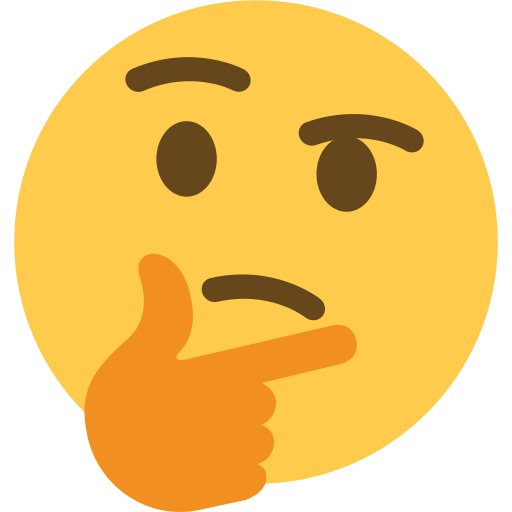 DomSewell got a reaction from ConorPower in Spotting and synch by JW and Wannberg in The Empire Strikes Back
DomSewell got a reaction from ConorPower in Spotting and synch by JW and Wannberg in The Empire Strikes Back
Apologies if this has been covered but I'm interested in the technology that JW had access to in 1980 for The Empire Strikes Back. There are no tempo markings in the orchestrator scores but there are in his sketches (I say sketches but really they are handwritten full scores with all the orchestration in a condensed format). So for example, in Asteroid Field he indicates a span of time from 27sec9fr to 29s4fr with 4 beats between them. All he would have had was Kenneth Wannberg (RIP (didn't realise he died last year)) a moviola machine, a stopwatch (?) and some calculations 60/secs in clip x beats = BPM and presumably a click book. A click book still exists in older editions of Karlin and Wright On the Track and I think I worked out using it that the bpm was 133.95 for 1.79secs (1s and 19fr with 24fps).
What i want to know is who put streamers on for the sessions as well as worked out the BPM's and where did they list them? Quite a large chunk of time would have been taken up by that synchronisation stage and if JW only had Wannberg to help him the achievement of writing such a lot of complex music for that film is even more if a Herculean effort.
Part observation and interest this post... clip with Wannberg towards the end of the vid...
-
 DomSewell got a reaction from Jurassic Shark in Spotting and synch by JW and Wannberg in The Empire Strikes Back
DomSewell got a reaction from Jurassic Shark in Spotting and synch by JW and Wannberg in The Empire Strikes Back
Apologies if this has been covered but I'm interested in the technology that JW had access to in 1980 for The Empire Strikes Back. There are no tempo markings in the orchestrator scores but there are in his sketches (I say sketches but really they are handwritten full scores with all the orchestration in a condensed format). So for example, in Asteroid Field he indicates a span of time from 27sec9fr to 29s4fr with 4 beats between them. All he would have had was Kenneth Wannberg (RIP (didn't realise he died last year)) a moviola machine, a stopwatch (?) and some calculations 60/secs in clip x beats = BPM and presumably a click book. A click book still exists in older editions of Karlin and Wright On the Track and I think I worked out using it that the bpm was 133.95 for 1.79secs (1s and 19fr with 24fps).
What i want to know is who put streamers on for the sessions as well as worked out the BPM's and where did they list them? Quite a large chunk of time would have been taken up by that synchronisation stage and if JW only had Wannberg to help him the achievement of writing such a lot of complex music for that film is even more if a Herculean effort.
Part observation and interest this post... clip with Wannberg towards the end of the vid...
-
 DomSewell got a reaction from Ludwig in Some thoughts on John Williams's atonal moments with reference to The Empire Strikes Back
DomSewell got a reaction from Ludwig in Some thoughts on John Williams's atonal moments with reference to The Empire Strikes Back
Thanks so much and such good news. I love the passion surrounding JW's music and the joy that it brings everyone. I'd be first on the list for the new action course!
-
 DomSewell got a reaction from j39m in Some thoughts on John Williams's atonal moments with reference to The Empire Strikes Back
DomSewell got a reaction from j39m in Some thoughts on John Williams's atonal moments with reference to The Empire Strikes Back
Thanks so much! I’ll do my best and yes will do some Goldsmith and Horner too after The ESB.
Possibly. But I suspect (although don’t know for certain) that a lot of the theory was already ingrained at his age even then (studies with Tedesco and others). Tim Rodier (Omni Music) suggested he did a lot of woodshedding when his first wife sadly passed away in 1974 (would be interesting to compare his work after with before?)
Of course that’s not to say that he didn’t get inspired by moving his fingers across the keys. It’s undoubtedly true that he did get get inspired in this way (as did Stravinsky eg Petrushka black keys/white keys). But also using the example of Stravinsky he also must have worked out certain combinations of notes that seem to ‘work’ since they come up again and again. The detail of his score shows someone who painstakingly writes (perhaps after having a play around!) - I really hope someone asks him about his classical studies and what books he was aware of. My feeling (I think others would generally agree) is that the coincidences of using Octatonic, hexatonic and Hungarian minor (and Super Locrian) are far too numerous to ‘intuit’.
I’ll be chatting to Frank Lehman soon I’m the next couple of weeks so will ask him about this ! It’s a fascinating topic! And thanks too!
Well put!
-
 DomSewell reacted to TolkienSS in Some thoughts on John Williams's atonal moments with reference to The Empire Strikes Back
DomSewell reacted to TolkienSS in Some thoughts on John Williams's atonal moments with reference to The Empire Strikes Back
I tremendously respect people who can talk in music theory like that.
But don't you think sometimes Williams sits at his piano and goes "that sounds interesting" instead of going "let me continue with combining advanced harmony with atonality by pivoting through maj/min dyads with added M7"?
-
 DomSewell reacted to Falstaft in Some thoughts on John Williams's atonal moments with reference to The Empire Strikes Back
DomSewell reacted to Falstaft in Some thoughts on John Williams's atonal moments with reference to The Empire Strikes Back
The best kind of post! Everyone, @DomSewell's work is amazing and if you haven't already checked out his videos, you owe it to yourself to do so. His analyses go into a level of detail and sophistication for JW's music that I'm not sure anyone else has. And that level of detail is, I feel, fully warranted by all the amazing things he keeps on discovering!
It's a JW musical fingerprint, that's for sure, and not just of his film music. That (014) trichord is basically the motivic through-line of his Cello Concerto (at least the original version, who can keep track...). It becomes progressively more prominent from movement to movement, starting halfway through the first, I believe.
Yes! Alien or Poltergeist would be amazing.
-
 DomSewell reacted to Jurassic Shark in Some thoughts on John Williams's atonal moments with reference to The Empire Strikes Back
DomSewell reacted to Jurassic Shark in Some thoughts on John Williams's atonal moments with reference to The Empire Strikes Back
He's also reconstructed Walton's complete score to Henry V - too bad it hasn't been recorded yet!
-
 DomSewell reacted to Ludwig in Some thoughts on John Williams's atonal moments with reference to The Empire Strikes Back
DomSewell reacted to Ludwig in Some thoughts on John Williams's atonal moments with reference to The Empire Strikes Back
I heartily second this. @DomSewell has done analysis videos on every cue in The Phantom Menace, and has been working through The Empire Strikes Back up to now. His work is on a forensic level of detail, so you can find commentary on practically every moment of these cues. Fine work, Dom, and keep it up!
Absolutely! I'm working on concepts right now for the next action course that tackles some of his more difficult harmonies to label. Not atonal, but not fully tonal either. So hopefully more people will add their voice to discussing these kinds of chords, because many of them are at the heart of much of Williams' film writing.
-
 DomSewell got a reaction from BrotherSound in Some thoughts on John Williams's atonal moments with reference to The Empire Strikes Back
DomSewell got a reaction from BrotherSound in Some thoughts on John Williams's atonal moments with reference to The Empire Strikes Back
Thanks so much! I’ll do my best and yes will do some Goldsmith and Horner too after The ESB.
Possibly. But I suspect (although don’t know for certain) that a lot of the theory was already ingrained at his age even then (studies with Tedesco and others). Tim Rodier (Omni Music) suggested he did a lot of woodshedding when his first wife sadly passed away in 1974 (would be interesting to compare his work after with before?)
Of course that’s not to say that he didn’t get inspired by moving his fingers across the keys. It’s undoubtedly true that he did get get inspired in this way (as did Stravinsky eg Petrushka black keys/white keys). But also using the example of Stravinsky he also must have worked out certain combinations of notes that seem to ‘work’ since they come up again and again. The detail of his score shows someone who painstakingly writes (perhaps after having a play around!) - I really hope someone asks him about his classical studies and what books he was aware of. My feeling (I think others would generally agree) is that the coincidences of using Octatonic, hexatonic and Hungarian minor (and Super Locrian) are far too numerous to ‘intuit’.
I’ll be chatting to Frank Lehman soon I’m the next couple of weeks so will ask him about this ! It’s a fascinating topic! And thanks too!
Well put!
-
 DomSewell got a reaction from enderdrag64 in Some thoughts on John Williams's atonal moments with reference to The Empire Strikes Back
DomSewell got a reaction from enderdrag64 in Some thoughts on John Williams's atonal moments with reference to The Empire Strikes Back
Thanks so much! I’ll do my best and yes will do some Goldsmith and Horner too after The ESB.
Possibly. But I suspect (although don’t know for certain) that a lot of the theory was already ingrained at his age even then (studies with Tedesco and others). Tim Rodier (Omni Music) suggested he did a lot of woodshedding when his first wife sadly passed away in 1974 (would be interesting to compare his work after with before?)
Of course that’s not to say that he didn’t get inspired by moving his fingers across the keys. It’s undoubtedly true that he did get get inspired in this way (as did Stravinsky eg Petrushka black keys/white keys). But also using the example of Stravinsky he also must have worked out certain combinations of notes that seem to ‘work’ since they come up again and again. The detail of his score shows someone who painstakingly writes (perhaps after having a play around!) - I really hope someone asks him about his classical studies and what books he was aware of. My feeling (I think others would generally agree) is that the coincidences of using Octatonic, hexatonic and Hungarian minor (and Super Locrian) are far too numerous to ‘intuit’.
I’ll be chatting to Frank Lehman soon I’m the next couple of weeks so will ask him about this ! It’s a fascinating topic! And thanks too!
Well put!
-
 DomSewell got a reaction from ConorPower in Some thoughts on John Williams's atonal moments with reference to The Empire Strikes Back
DomSewell got a reaction from ConorPower in Some thoughts on John Williams's atonal moments with reference to The Empire Strikes Back
Thanks so much! I’ll do my best and yes will do some Goldsmith and Horner too after The ESB.
Possibly. But I suspect (although don’t know for certain) that a lot of the theory was already ingrained at his age even then (studies with Tedesco and others). Tim Rodier (Omni Music) suggested he did a lot of woodshedding when his first wife sadly passed away in 1974 (would be interesting to compare his work after with before?)
Of course that’s not to say that he didn’t get inspired by moving his fingers across the keys. It’s undoubtedly true that he did get get inspired in this way (as did Stravinsky eg Petrushka black keys/white keys). But also using the example of Stravinsky he also must have worked out certain combinations of notes that seem to ‘work’ since they come up again and again. The detail of his score shows someone who painstakingly writes (perhaps after having a play around!) - I really hope someone asks him about his classical studies and what books he was aware of. My feeling (I think others would generally agree) is that the coincidences of using Octatonic, hexatonic and Hungarian minor (and Super Locrian) are far too numerous to ‘intuit’.
I’ll be chatting to Frank Lehman soon I’m the next couple of weeks so will ask him about this ! It’s a fascinating topic! And thanks too!
Well put!
-
 DomSewell got a reaction from MaxTheHouseelf in Some thoughts on John Williams's atonal moments with reference to The Empire Strikes Back
DomSewell got a reaction from MaxTheHouseelf in Some thoughts on John Williams's atonal moments with reference to The Empire Strikes Back
Thanks so much! I’ll do my best and yes will do some Goldsmith and Horner too after The ESB.
Possibly. But I suspect (although don’t know for certain) that a lot of the theory was already ingrained at his age even then (studies with Tedesco and others). Tim Rodier (Omni Music) suggested he did a lot of woodshedding when his first wife sadly passed away in 1974 (would be interesting to compare his work after with before?)
Of course that’s not to say that he didn’t get inspired by moving his fingers across the keys. It’s undoubtedly true that he did get get inspired in this way (as did Stravinsky eg Petrushka black keys/white keys). But also using the example of Stravinsky he also must have worked out certain combinations of notes that seem to ‘work’ since they come up again and again. The detail of his score shows someone who painstakingly writes (perhaps after having a play around!) - I really hope someone asks him about his classical studies and what books he was aware of. My feeling (I think others would generally agree) is that the coincidences of using Octatonic, hexatonic and Hungarian minor (and Super Locrian) are far too numerous to ‘intuit’.
I’ll be chatting to Frank Lehman soon I’m the next couple of weeks so will ask him about this ! It’s a fascinating topic! And thanks too!
Well put!
-
 DomSewell reacted to Datameister in Some thoughts on John Williams's atonal moments with reference to The Empire Strikes Back
DomSewell reacted to Datameister in Some thoughts on John Williams's atonal moments with reference to The Empire Strikes Back
I'm guessing it's a little of both. He's obviously studied, internalized, and experimented with plenty of music theory. Like @karelmsaid, it's probably not something he usually has to consciously articulate to himself anymore. And I'm sure it also depends on the nature of the writing.
-
 DomSewell reacted to karelm in Some thoughts on John Williams's atonal moments with reference to The Empire Strikes Back
DomSewell reacted to karelm in Some thoughts on John Williams's atonal moments with reference to The Empire Strikes Back
I think at this stage of his life, he doesn't have to think about it all because maybe 50 or 60 years ago he said "this sounds interesting...why is that interesting? What are the characteristics that make this work yet sound fresh?" By now it's probably automatic because he's been scratching his head over it for so many years. One doesn't get this point of it being natural or automatic without years and years of grunt work, head scratching, and challenging yourself to push deeper.
-
 DomSewell got a reaction from pete in Some thoughts on John Williams's atonal moments with reference to The Empire Strikes Back
DomSewell got a reaction from pete in Some thoughts on John Williams's atonal moments with reference to The Empire Strikes Back
Thanks so much! I’ll do my best and yes will do some Goldsmith and Horner too after The ESB.
Possibly. But I suspect (although don’t know for certain) that a lot of the theory was already ingrained at his age even then (studies with Tedesco and others). Tim Rodier (Omni Music) suggested he did a lot of woodshedding when his first wife sadly passed away in 1974 (would be interesting to compare his work after with before?)
Of course that’s not to say that he didn’t get inspired by moving his fingers across the keys. It’s undoubtedly true that he did get get inspired in this way (as did Stravinsky eg Petrushka black keys/white keys). But also using the example of Stravinsky he also must have worked out certain combinations of notes that seem to ‘work’ since they come up again and again. The detail of his score shows someone who painstakingly writes (perhaps after having a play around!) - I really hope someone asks him about his classical studies and what books he was aware of. My feeling (I think others would generally agree) is that the coincidences of using Octatonic, hexatonic and Hungarian minor (and Super Locrian) are far too numerous to ‘intuit’.
I’ll be chatting to Frank Lehman soon I’m the next couple of weeks so will ask him about this ! It’s a fascinating topic! And thanks too!
Well put!


